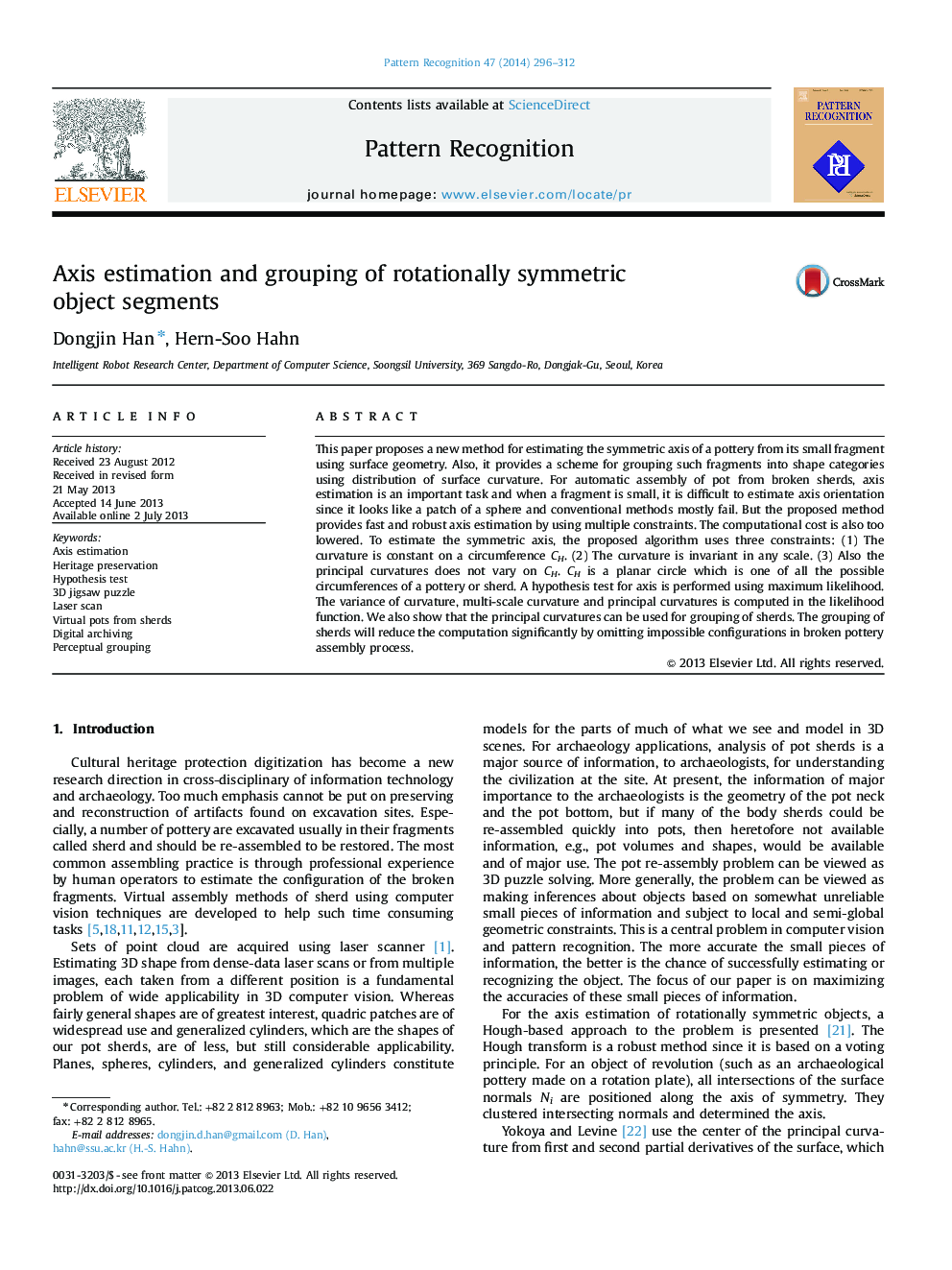| Article ID | Journal | Published Year | Pages | File Type |
|---|---|---|---|---|
| 532124 | Pattern Recognition | 2014 | 17 Pages |
•The symmetric axis of a pottery is estimated from its small fragment.•The curvature is computed from the intersection of hypothetical plane and sherd.•Sherds can be grouped via their surface principal curvature histogram.•Grouping can divide the problem into small set of the problem.
This paper proposes a new method for estimating the symmetric axis of a pottery from its small fragment using surface geometry. Also, it provides a scheme for grouping such fragments into shape categories using distribution of surface curvature. For automatic assembly of pot from broken sherds, axis estimation is an important task and when a fragment is small, it is difficult to estimate axis orientation since it looks like a patch of a sphere and conventional methods mostly fail. But the proposed method provides fast and robust axis estimation by using multiple constraints. The computational cost is also too lowered. To estimate the symmetric axis, the proposed algorithm uses three constraints: (1) The curvature is constant on a circumference CH. (2) The curvature is invariant in any scale. (3) Also the principal curvatures does not vary on CH. CH is a planar circle which is one of all the possible circumferences of a pottery or sherd. A hypothesis test for axis is performed using maximum likelihood. The variance of curvature, multi-scale curvature and principal curvatures is computed in the likelihood function. We also show that the principal curvatures can be used for grouping of sherds. The grouping of sherds will reduce the computation significantly by omitting impossible configurations in broken pottery assembly process.
